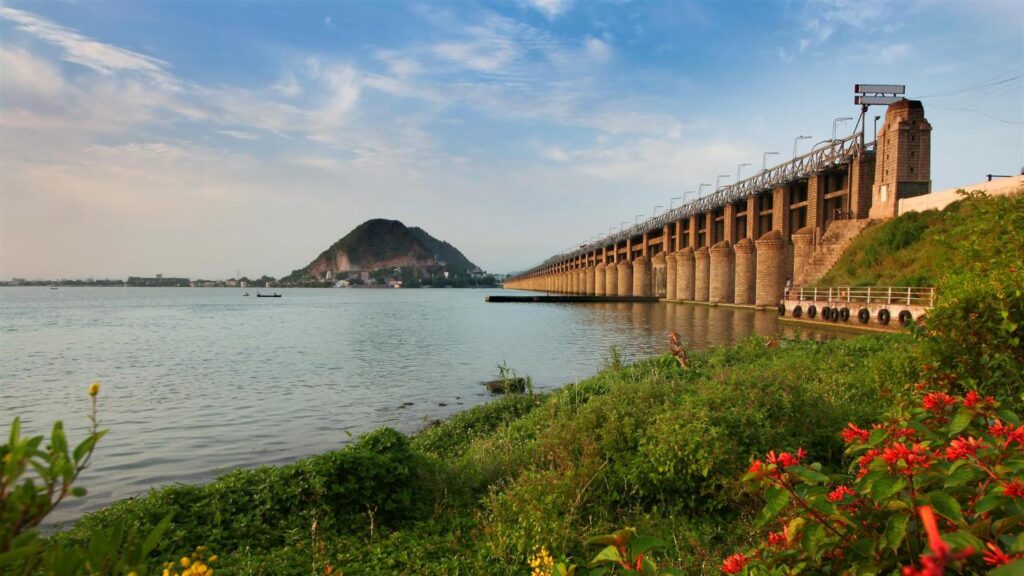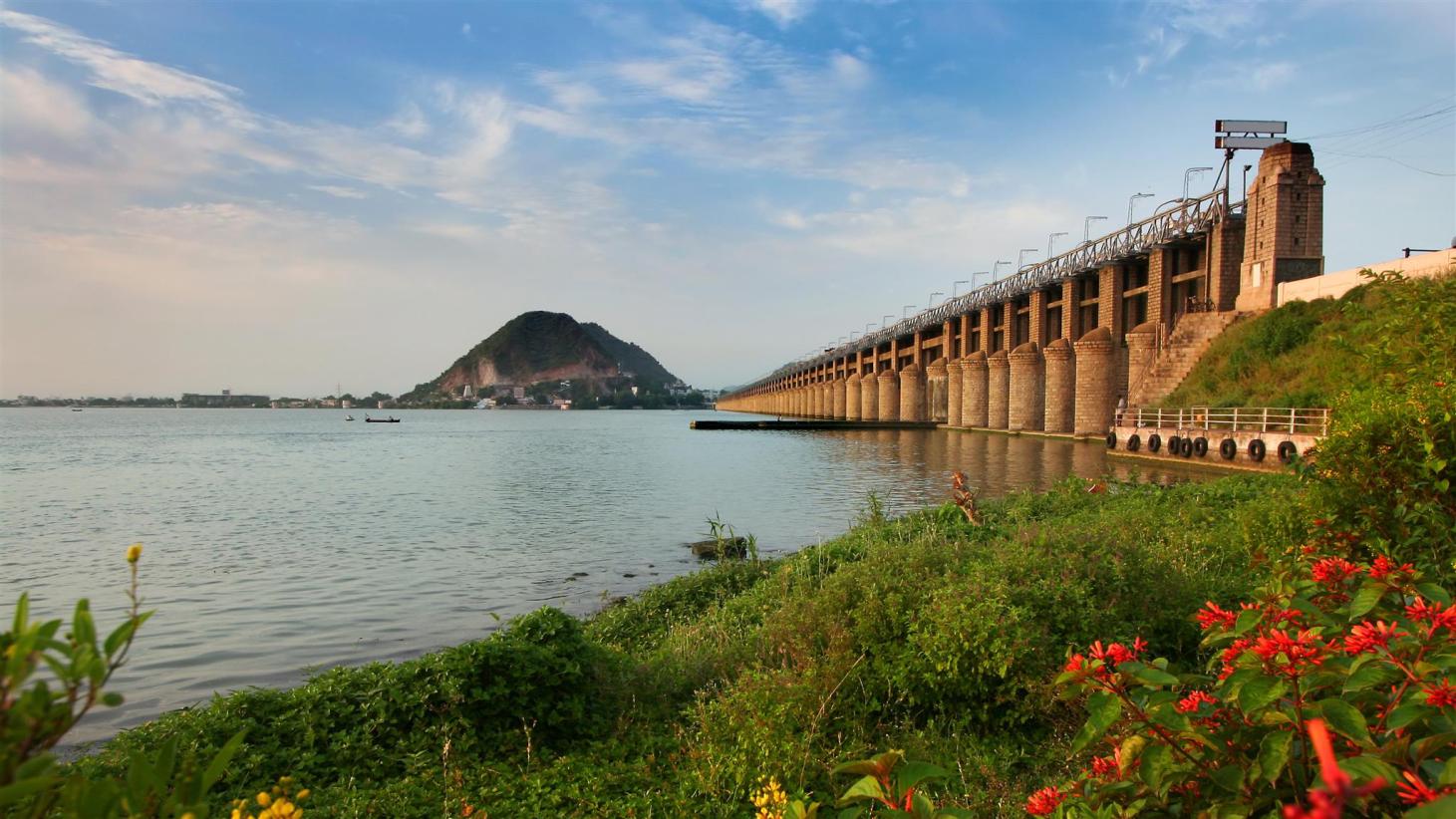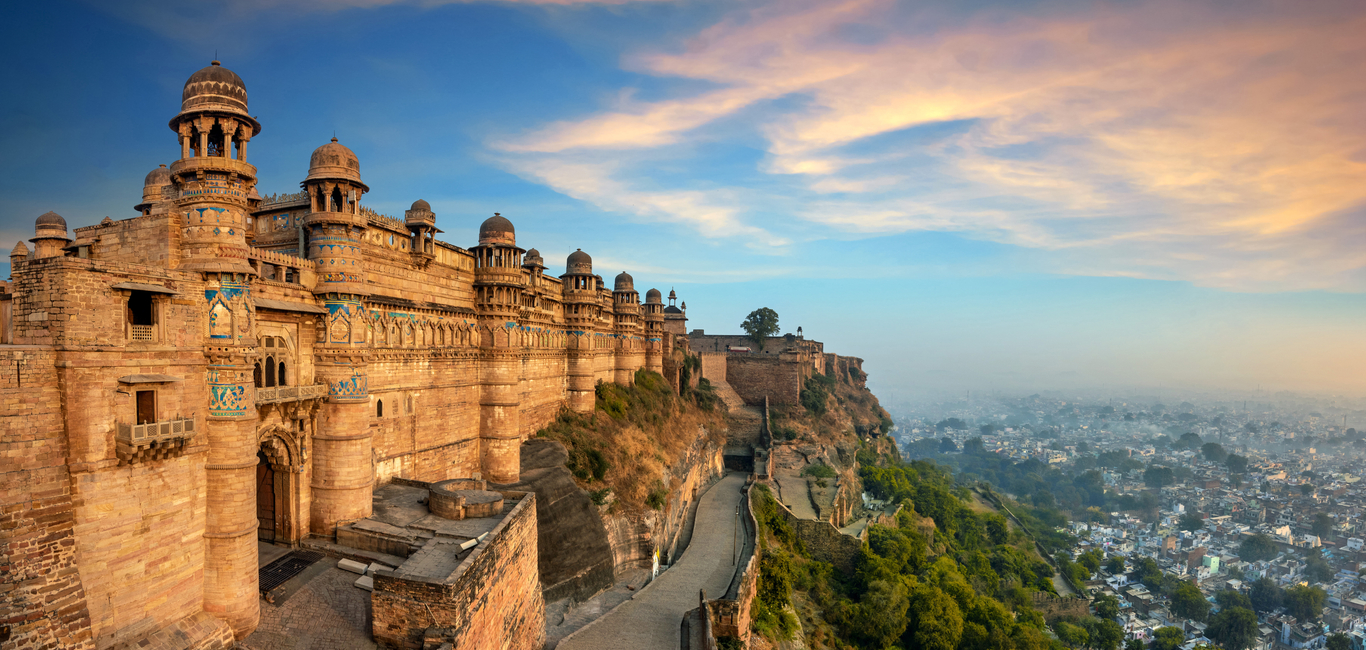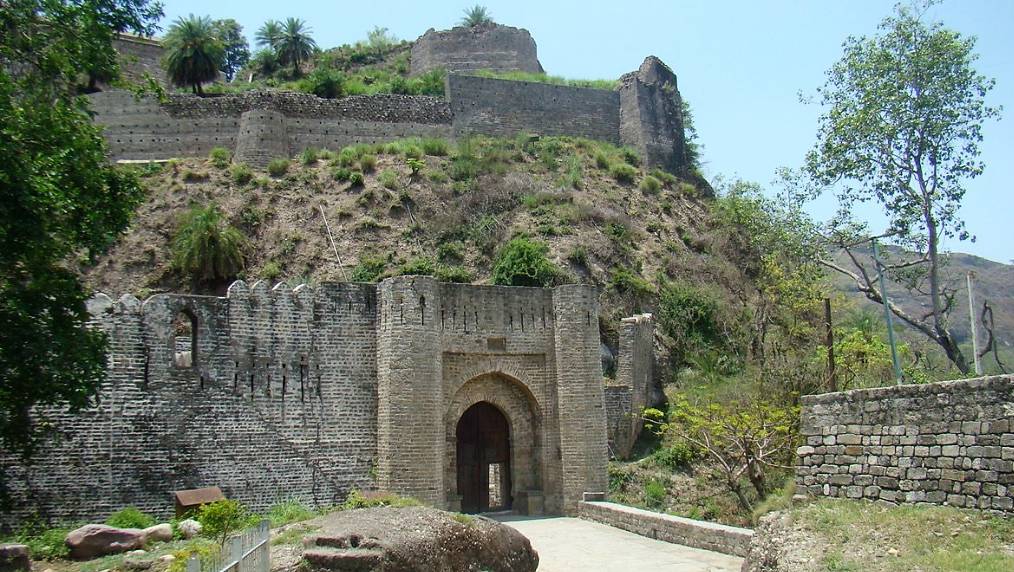
Vijayawada, the ‘City of Victory is set amidst scenic surroundings on the banks of river Krishna and is picturesquely ringed by beautiful hills. This ‘Cultural Capital’ of Andhra Pradesh, Tour of Vijayawada, is an important historical, cultural, political, center, education, and commercial center.
Kanaka Durga Temple: The sacred shrine perched atop the Indrakila Hilof Vijayawadaer Krishna is an icon of Vijayawada. It is dedicated to Goddess Kanaka or the golden deity, who is believed to be the protector of Vijayawada. The shrine abounds in numerous visiting legends and is a must-visit site. The Dasara festival (Sept./ Oct.) celebrated here is one of the most popular events of Vijayawada. The Indrakila hill is also dotted with several rock-cut temples.
The Gandhi Hill (Orr Hill): Perched atop this hill seven first Gandhi Memorial with seven stupas in the country. The impressive monument is 15.8 m. high and is the tallest structure in the city. It also houses a library and a planetarium. A sound and light show forganizedMahatma Gandhi’s life is organized here.
St. Mary’s Church, Gunadala: The magnificent church is set on a hillock on the eastern side of the city.
Prakasam Barrage: This gigantic engineering marvel built across the river Krishna is the pride of Vijayawada. The barrage creates a panoramic lake and three canals from it flow through the city giving Vijayawada its Venetian looks.
Rajiv Gandhi Park: This well-laid out park has an impressive horticultural network There is also a mini zoo and a musical water fountain.
Victoria Museum: It has a rich collection of ancient sculptures, paintings, idols, weapons, cutlery, and ancient inscriptions.
Hazrat Bal Mosque: It houses a holy relic of the Prophet Mohammed, which is displayed once a year.
Around Vijayawada
Amaravati (60 kms.)
The major Buddhist pilgrim center on the banks of river Krishna was the former capital of the Satvahanas and one of the four important places of Buddhist worship in the country. The 2000 years old Mahastupa, locally known as Deepaladinne or Hillock of Lamps’ is the largest stupa in India, measuring 36.5 meters wide and 16.5 meters high. Besides this, only a few scattered ruins are all that remains of the once-grand city. A small replica of the Mahastupa can be seen at the nearby museum. The Amareswara temple dedicated to Lord Shiva is another famous holy site.
Mangalagiri (12 kms.)
It is famous for the sacred shrine of Lord Narasimha (Vishnu) perched atop a hill. The mouth of the unique idol of the presiding deity accepts half the quantity of Panakam (jaggery dissolved in water) offered by devotees, irrespective of the quantity offered.
Hinkar Thirtha: The newly built shrine at Manglagiri is the biggest Jain temple in the region. The magnificent shrine is noted for great artistic work.
Machilipatnam (70 kms.)
This seaside township was an important trading post. It is also the birthplace of Kalamkari art of textile printing. The Manginapudi beach near the town is simply irresistible and is very safe for bathing. Thousands of pilgrims take a holy dip in the sea during Magha Poornima. The Panduranga Swamy temple here is a famous Hindu pilgrim center.
For more information, visit google. Also, have a look at our various monthly issues.




